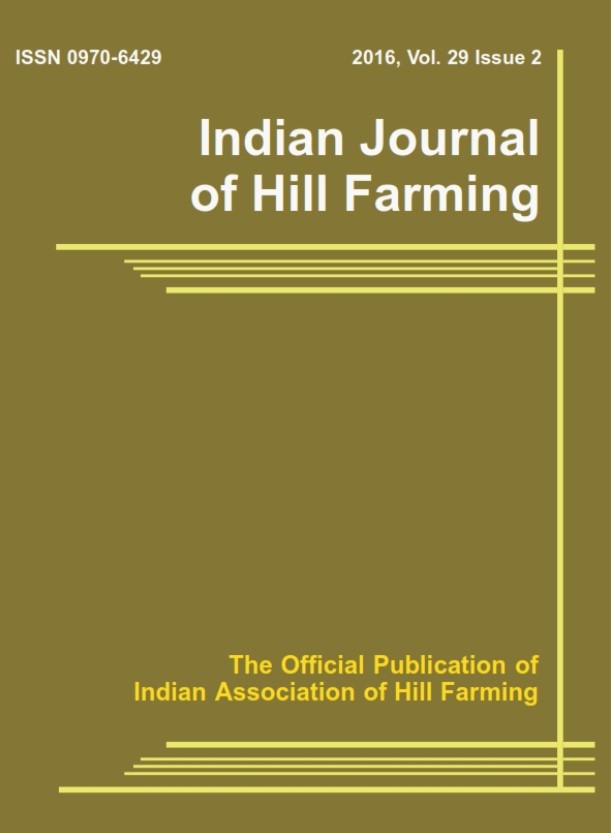Comparative Economics of Rice Cultivation in Himachal Pradesh and Manipur States of India
DOI:
https://doi.org/10.56678/Keywords:
Cost of production, Cobb-Douglas, returns to scale, elasticity of production, riceAbstract
Rice is an important food crop of India and with almost no scope in increasing the area
under this crop and recent trends of declining growth rates and increasing shortages in
inputs, the aim should be at eliminating the spatial differences in yield and production to
augment rice production. Due to various differences, the average yield of paddy are quite
different between Himachal Pradesh (1.55 t/ha) and Manipur (2.26 t/ha). Therefore, the
present study was conducted in Kangra district of Himachal Pradesh and Imphal-West
district of Manipur to compare the economics of rice cultivation in the two states during
the growing season of 2011-12. Stratified simple random sampling technique was used to
select 50 paddy growing farmers from each district and then categorised into small and
large farmers. Gross returns were found to be higher on large farms than on small farms in
both the states. Small farms of Manipur were not viable, as the price they received for a
quintal of the main product (Rs 1200) did not cover the cost of production (Rs 1202).
Cobb-Douglas production function analysis revealed that the factors affecting paddy
production on small farms were use of manures and fertilizers and plant variety in
Himachal Pradesh and use of seed and plant variety in Manipur. The factors responsible
for paddy production on large farms were use of seed, plant protection chemicals and plant
variety in Himachal Pradesh, while they were use of manures and fertilizers, seed, plant
protection chemicals and plant variety in Manipur.
Downloads
Published
Issue
Section
License

This work is licensed under a Creative Commons Attribution-NonCommercial-NoDerivatives 4.0 International License.




